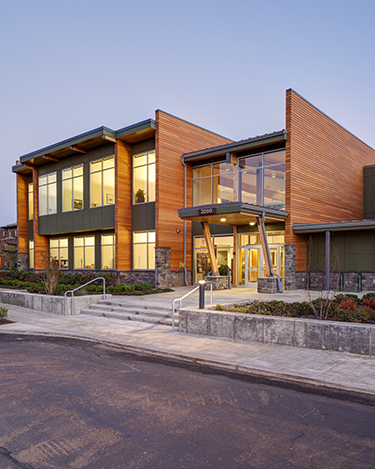|
Subscribe / Renew |
|
|
Contact Us |
|
| ► Subscribe to our Free Weekly Newsletter | |
| home | Welcome, sign in or click here to subscribe. | login |
Architecture & Engineering
| |
 |
October 27, 2016
Survey: Rolluda Architects
Specialty: Master planning, programming, architectural design and construction support for education, government, transportation, housing, light-industrial, religious and cultural projects
Management: Alex Rolluda, principal and president
Founded: Rolluda Architects, 2002; Rolluda + Scott Architects, 1996—2002
Headquarters: Seattle
2015 revenue: $4.6 million
Projected 2016 revenue: $3.25 million
Projects: Samuel E. Kelly Ethnic Cultural Center, University of Washington; Cascade Elementary School, Ferndale School District; USDA Forestry Sciences Lab, Oregon State University
Alex Rolluda, principal and president, answered questions about his firm and the industry.
Q: Have you seen an uptick in your overall business?
A: Yes. Though our projected revenue for 2016 is estimated to be less than last year the overall number of projects has increased.
Q: What areas of your business have performed well?
A: There has been an increase in our K-12 work, I believe largely due to the robust economy and the passing of school bond issues. There have been substantially more projects advertised (RFQs) in the DJC, providing us with more opportunity to win projects.
Municipal and transportation-related projects have increased in our office for existing and new clients. The establishment of new office buildings for Google, Weyerhaeuser, Amazon and now Facebook to the Seattle downtown area brings a large influx of people requiring expansion to existing transportation systems and public utilities, as well as housing.
Q: How has public sector work for your firm been in the last year?
A: We have found that the public sector work for our firm has increased this past year.
Q: Have you used any innovative or new sustainability methods or designs?
A: We incorporate sustainability from the outset of projects, allowing for integrated design solutions at a lower cost. Well thought-out design decisions to waste reduction, energy use, siting, efficient use of resources; and providing high-quality (interior) environments. Common-sense sustainable designs have included:
• Locally sourced materials, renewable, recycled, recyclable materials whenever possible
• Low-VOC paint in specifications, use of rubber flooring, recycled countertops
• Look at repair versus replacement options in terms of life-cycle costs
• Low-maintenance materials that do not require toxic cleaning materials
• Good design extends renovation cycle (and reduces waste)
• Timeless, durable low-maintenance finishes that won’t need to be replaced quickly
Q: What were the challenges with using those methods, if any?
A: Many of our clients have established material standards and specifications. It can be challenging introducing new alternative materials and finding installations that have been put to the test of time for owner review.
Q: With 24 design professionals, do you plan to change your staff size?
A: We are looking to hire two more design professionals before the end of the year — one junior-level designer and one senior-level architect.
Other Stories:
- Healthy buildings start with healthy materials
- Survey: Hutteball & Oremus Architecture
- Survey: The Blueline Group
- Survey: Innova Architects
- Survey: McKinstry
- Senior designers, new architects learn from one another
- Is Passive House the solution to our climate crisis?
- National crisis grows as infrastructure crumbles away
- A new engineer’s guide to consulting in Central Washington
- Art tree depicts U District project’s community link
- Interviewing for that big job? Here are 5 tips
- Survey: CollinsWoerman



